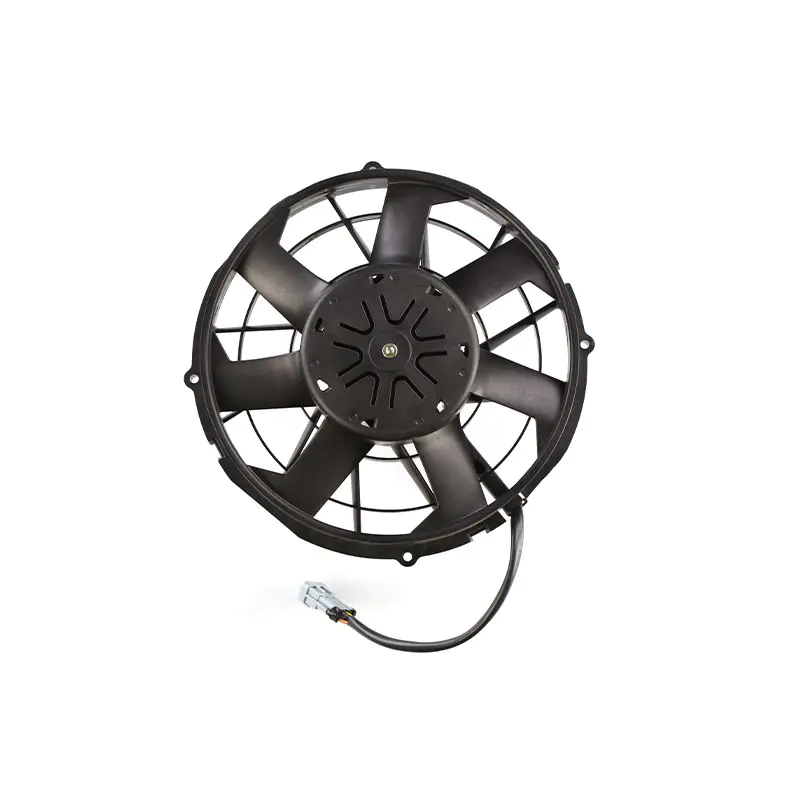ติดต่อเรา
ที่อยู่อีเมลของคุณจะไม่ถูกเผยแพร่ ช่องที่ต้องกรอกถูกทำเครื่องหมายไว้ -
ประสิทธิภาพสูงและมีเสียงรบกวนต่ำ DC Axial Flow พัดลมเปลี่ยนการระบายความร้อนในอุตสาหกรรม
Sep 25, 2025เพิ่มประสิทธิภาพการระบายความร้อน: บทบาทของพัดลมหม้อน้ำถังประสิทธิภาพสูง
Sep 18, 2025ประสิทธิภาพการไหลเวียนของอากาศสูงนิยามใหม่ของรถถัง
Sep 11, 2025IP68 DC Motors: นิยามใหม่ประสิทธิภาพในสภาพแวดล้อมที่รุนแรง
Sep 04, 2025เหตุใดพัดลม Axial ที่ไร้แปรงจึงเป็นทางเลือกสำหรับการระบายอากาศที่มีประสิทธิภาพและการระบายความร้อน?
Jul 31, 2025EC forward-tilting แฟน ๆ sentrifugal: ประสิทธิภาพและประสิทธิภาพที่อธิบายประสิทธิภาพและประสิทธิภาพที่อธิบาย
Aug 29, 2025พัดลมแรงเหวี่ยง dc ไร้เดียงสา: คู่มือที่ครอบคลุมสำหรับการเลือกและแอปพลิเคชัน
Aug 20, 2025พัดลมไหลตามแนวแกน DC: คู่มือที่ครอบคลุม
Aug 11, 2025พัดลมเครื่องหมุนหลักของยานยนต์ DC: คู่มือที่ครอบคลุม
Aug 04, 2025มอเตอร์พัดลมระบายความร้อน DC: ตัวขับหลักของการกระจายความร้อนที่มีประสิทธิภาพ
Jul 24, 2025ความลึกลับทางแม่เหล็กไฟฟ้าของเครื่องเป่าลมและแนวทางปฏิบัติหลายอย่าง
Jul 17, 2025มอเตอร์พัดลมระเหยได้อย่างไรให้การระบายความร้อนที่มีประสิทธิภาพและเชื่อถือได้?
Jul 08, 2025In the modern industrial field, centrifugal fans are important fluid conveying equipment, and their energy efficiency levels directly affect the production efficiency and operating costs of enterprises. Therefore, how to improve the energy efficiency of centrifugal fans through aerodynamic design optimization has become a topic of widespread concern inside and outside the industry.
1. Innovation in impeller design
The impeller is the core component of the centrifugal fan, and its design directly affects the performance of the fan. Traditional impeller designs often focus on meeting basic functional requirements while ignoring optimization of energy efficiency. Modern impeller design pays more attention to the improvement of aerodynamic performance. By using advanced calculation methods and design software, the impeller's hub ratio, number of blades, blade inclination angle and other parameters are finely adjusted. These adjustments are designed to reduce flow separation and vortex losses on the blade surface and improve the efficiency of gas flow, thereby achieving significant improvements in energy efficiency.
2. Refined design of blade shape
Blade shape is one of the key factors that determine the performance of centrifugal fans. Traditional blade shape design is often based on empirical formulas or analog designs, which makes it difficult to achieve the best aerodynamic effect. Modern blade design relies on advanced CAD/CAM technology and CFD simulation technology to conduct refined design of blade profile, thickness, twist and other parameters. By optimizing the blade shape, the flow resistance of the fluid on the blade surface can be reduced, and the stability and uniformity of the air flow can be improved, thereby reducing energy consumption and improving energy efficiency.
3. Strategies for improving flow channels
The flow channel is the main channel for gas flow inside the centrifugal fan. Whether its design is reasonable or not directly affects the energy efficiency of the fan. Traditional flow channel designs often have problems such as poor airflow and high resistance, resulting in low fan energy efficiency. In order to improve this problem, modern flow channel design adopts a variety of optimization strategies, such as increasing the air inlet area, optimizing the air inlet shape, reducing bends and diameter changes, etc. These measures are designed to reduce the resistance and loss of air flow in the flow channel, increase the flow speed and efficiency of air flow, and thereby improve the overall energy efficiency of the fan.
4. Application of CFD technology
CFD technology is an important tool in the aerodynamic design of modern centrifugal fans. Through CFD simulation, the air flow inside the fan can be visually observed, the flow characteristics of the fluid on the blade surface and flow channel can be analyzed, and potential flow bottlenecks and loss sources can be identified. Based on CFD simulation results, designers can carry out targeted optimization of components such as impellers, blades and flow channels to improve the aerodynamic performance of the fan. In addition, CFD technology can also be used to predict the performance parameters of wind turbines, such as air volume, wind pressure and efficiency, etc., providing strong support for the design and selection of wind turbines.
The optimization of aerodynamic design to improve the energy efficiency of centrifugal fans is a complex process involving many aspects. Through innovations in impeller design, refined blade shape design, flow channel improvement strategies, and the application of CFD technology, the aerodynamic performance of centrifugal fans can be significantly improved, energy consumption reduced, and energy efficiency improved. In the future, with the continuous advancement of science and technology and the continuous innovation of design concepts, the aerodynamic design optimization of centrifugal fans will develop in a more refined and intelligent direction. We have reason to believe that in the near future, centrifugal fans will become more efficient, energy-saving, and environmentally friendly fluid conveying equipment, making greater contributions to industrial production and the sustainable development of human society.

ที่อยู่อีเมลของคุณจะไม่ถูกเผยแพร่ ช่องที่ต้องกรอกถูกทำเครื่องหมายไว้ -
Zhejiang Nicety Electric Machinery Co., Ltd. เชี่ยวชาญการผลิตผลิตภัณฑ์ 4 ชุด ได้แก่ พัดลมอิเล็กทรอนิกส์คอนเดนเซอร์ พัดลมหม้อน้ำ (ถังเก็บน้ำ) โบลเวอร์ และชุดประกอบเครื่องปรับอากาศ การผลิตระดับมืออาชีพพัดลมแกน DC สำหรับยานยนต์แบรนด์อเมริกา ยุโรป ญี่ปุ่น เกาหลี และในประเทศ
Email: [email protected] / ลิลลี่@zjnem.com
Tel: +86-0578-7125439 / +86 181 0658 9231
Address:เลขที่ 98 ถนน Guangda เขตอุตสาหกรรม Jinsha เมืองหลงฉวน มณฑลเจ้อเจียง ประเทศจีน